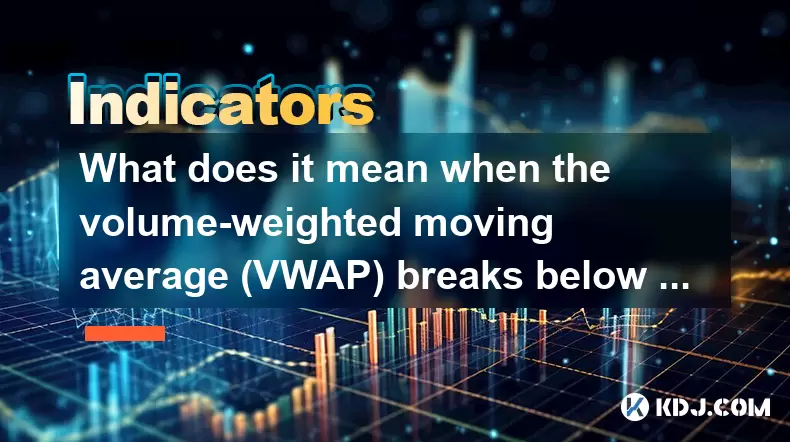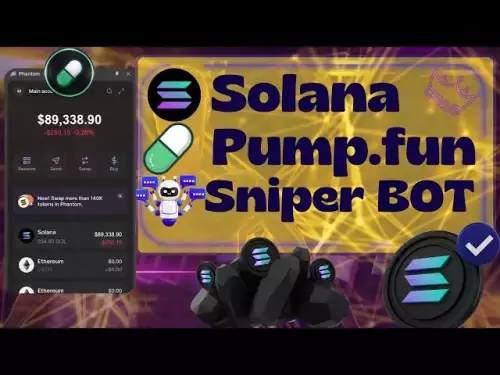-
 Bitcoin
Bitcoin $115100
-1.30% -
 Ethereum
Ethereum $4758
-1.70% -
 XRP
XRP $3.027
-2.19% -
 Tether USDt
Tether USDt $0.9998
-0.01% -
 BNB
BNB $883.2
-1.42% -
 Solana
Solana $204.0
2.62% -
 USDC
USDC $1.000
0.02% -
 Dogecoin
Dogecoin $0.2371
-0.97% -
 TRON
TRON $0.3612
-1.24% -
 Cardano
Cardano $0.9128
-2.19% -
 Chainlink
Chainlink $26.13
-3.93% -
 Hyperliquid
Hyperliquid $44.73
0.90% -
 Sui
Sui $3.715
-0.56% -
 Stellar
Stellar $0.4153
-2.41% -
 Ethena USDe
Ethena USDe $1.000
-0.04% -
 Bitcoin Cash
Bitcoin Cash $588.9
-2.06% -
 Avalanche
Avalanche $25.91
3.27% -
 Hedera
Hedera $0.2525
-1.45% -
 Litecoin
Litecoin $120.9
-1.35% -
 UNUS SED LEO
UNUS SED LEO $9.607
0.30% -
 Toncoin
Toncoin $3.382
-0.31% -
 Shiba Inu
Shiba Inu $0.00001329
-0.38% -
 Uniswap
Uniswap $11.38
-1.67% -
 Polkadot
Polkadot $4.222
2.83% -
 Aave
Aave $354.5
4.93% -
 Dai
Dai $0.0000
0.00% -
 Bitget Token
Bitget Token $4.704
-1.49% -
 Cronos
Cronos $0.1565
1.83% -
 Ethena
Ethena $0.7463
1.55% -
 Monero
Monero $265.8
-0.39%
What does it mean when the volume-weighted moving average (VWAP) breaks below but quickly recovers?
A quick recovery after a VWAP break suggests temporary selling pressure and potential bullish resilience, especially if confirmed by rising volume and supportive market structure.
Aug 12, 2025 at 04:01 pm

Understanding the Volume-Weighted Average Price (VWAP)
The Volume-Weighted Average Price (VWAP) is a key technical analysis tool widely used in cryptocurrency and financial markets. It calculates the average price of an asset based on both price and trading volume over a specific time period. The formula for VWAP is:
VWAP = (Cumulative (Price × Volume)) / Cumulative Volume.
This metric helps traders determine the average price at which an asset has traded throughout the day, weighted by volume. Because it incorporates volume, VWAP is considered more accurate than a simple moving average in reflecting true market sentiment. Traders often use VWAP as a benchmark to assess whether they are buying or selling at a favorable price relative to market activity. When the current price is above VWAP, it suggests bullish momentum; when below, it may indicate bearish pressure.
What a VWAP Breakdown Signifies
A break below VWAP occurs when the current market price drops beneath the VWAP line on a chart. This movement is often interpreted as a sign of weakening bullish momentum or increasing selling pressure. In the cryptocurrency market, where volatility is high, such a break can trigger algorithmic trading systems or alert day traders to potential short opportunities. However, the significance of the break depends on the context, including volume, timeframe, and overall market structure. A break accompanied by high volume typically indicates strong conviction from sellers, whereas a low-volume break may be dismissed as noise. The moment the price breaches VWAP, some traders may interpret it as a shift in control from buyers to sellers.
Implications of a Quick Recovery After a VWAP Break
When the price breaks below VWAP but quickly recovers, it suggests that the selling pressure was temporary or lacked follow-through. This behavior often reflects a test of support rather than a sustained trend reversal. In crypto markets, such a pattern can occur during periods of consolidation or when large market participants absorb sell orders without allowing the price to decline significantly. The rapid recovery indicates that demand re-entered the market swiftly, potentially from institutional buyers or algorithmic systems programmed to buy near key averages. This scenario may signal resilience in bullish sentiment and could be viewed as a failed bearish breakout. Traders watching for confirmation of trends may treat this as a sign that the uptrend remains intact.
How to Analyze the Context of the Break and Recovery
To properly interpret a VWAP break followed by a quick recovery, several factors must be evaluated:
- Volume during the break: If the breakdown occurs on low volume, it may not reflect genuine market conviction. Conversely, high volume on the recovery suggests strong buying interest.
- Timeframe: On shorter timeframes like 5-minute or 15-minute charts, VWAP breaks are more common and less significant. On longer intervals such as 1-hour or 4-hour charts, such events carry more weight.
- Market structure: If the asset is in a clear uptrend with higher highs and higher lows, a brief dip below VWAP followed by recovery aligns with trend continuation.
- Liquidity zones: Check if the break coincided with known support levels or order book clusters. A recovery from such zones reinforces the strength of demand.
- Macro conditions: News events, exchange outages, or broader market sentiment (e.g., Bitcoin dominance shifts) can influence short-term price action around VWAP.
Traders should overlay VWAP with other tools like moving averages, RSI, or order flow data to confirm whether the recovery is sustainable.
Trading Strategies Based on VWAP Rejection
Traders can develop specific strategies when observing a VWAP break and recovery:
- Long entry on recovery: After the price breaks below VWAP and closes back above it, some traders enter long positions, placing stop-loss orders just below the low of the rejection candle.
- Confirmation with candlestick patterns: A bullish engulfing or hammer candle forming at the point of recovery increases the reliability of the signal.
- Use of additional VWAP variants: Some platforms offer anchored VWAP or session VWAP. Comparing the current VWAP with these can provide context on whether the recovery is within a broader accumulation phase.
- Volume profile integration: Overlaying a volume profile helps identify high-volume nodes near the VWAP level. A recovery from a high-volume node adds credibility to the bounce.
- Avoiding false signals: Not every break and recovery leads to a sustained move. Waiting for a close above VWAP with expanding volume reduces the risk of entering on a fakeout.
Automated trading bots can be programmed to detect such patterns using API-based charting libraries like TradingView webhooks or Python scripts with libraries such as ccxt and pandas.
Common Misinterpretations and Pitfalls
Many traders misinterpret a VWAP break and recovery as a guaranteed reversal signal, which can lead to premature entries. A key mistake is ignoring the broader trend—in a strong downtrend, even a quick recovery may only be a temporary relief before further downside. Another error is failing to account for VWAP reset frequency; on most platforms, VWAP resets at the start of each trading session (often UTC 00:00 for crypto), so comparing intraday breaks across days can be misleading. Additionally, in low-liquidity altcoins, VWAP can be easily manipulated by large orders, making the signal less reliable. Always verify the behavior on multiple exchanges and cross-reference with on-chain data when possible.
Frequently Asked Questions
Does a VWAP break below followed by recovery work the same on all cryptocurrencies?
No, the reliability of this signal varies by asset. Major cryptocurrencies like Bitcoin (BTC) and Ethereum (ETH) tend to exhibit more reliable VWAP behavior due to higher liquidity and participation from institutional traders. In contrast, low-market-cap altcoins may show erratic VWAP breaks due to thin order books and pump-and-dump activity, making the recovery less meaningful.
How long should the recovery take to be considered “quick”?
A recovery is generally considered quick if the price returns above VWAP within one to three candlesticks on the chart timeframe being analyzed. For example, on a 15-minute chart, a recovery within 45 minutes would qualify. The tighter the timeframe, the stronger the signal, especially if accompanied by rising volume.
Can VWAP be used effectively on non-intraday timeframes?
Yes, but with caveats. While VWAP is primarily designed for intraday analysis, some traders use anchored VWAP starting from significant price points (e.g., a major swing low) on daily or weekly charts. However, the standard VWAP resets daily, so its usefulness diminishes on longer timeframes unless customized.
Should I combine VWAP with other indicators for better accuracy?
Absolutely. Combining VWAP with tools like EMA ribbons, MACD, or order book depth enhances signal accuracy. For instance, a VWAP recovery that coincides with a bullish MACD crossover and increasing bid depth on the order book provides a stronger case for a long entry.
Disclaimer:info@kdj.com
The information provided is not trading advice. kdj.com does not assume any responsibility for any investments made based on the information provided in this article. Cryptocurrencies are highly volatile and it is highly recommended that you invest with caution after thorough research!
If you believe that the content used on this website infringes your copyright, please contact us immediately (info@kdj.com) and we will delete it promptly.
- XYZVerse, Shiba Inu, and the 2025 Bull Cycle: A Meme Coin Evolution
- 2025-08-24 13:05:12
- WLFI Token, BingX, and the Trading Landscape: A New York Perspective
- 2025-08-24 12:45:20
- Aave, Governance, Allocation: Navigating DeFi's Shifting Sands
- 2025-08-24 12:45:20
- Crypto Coins in 2025: Meme Coins, Undervalued Blockchains, and Bull Run Predictions
- 2025-08-24 13:05:12
- Fed Pivot Ignites Crypto Rally: Altcoins Set to Outperform?
- 2025-08-24 13:25:12
- Eric Trump, Tokyo, and Metaplanet: A Bitcoin Bonanza?
- 2025-08-24 11:05:13
Related knowledge

What does it mean when the +DI and -DI cross frequently in the DMI indicator but the ADX is flattening?
Aug 11,2025 at 03:15am
Understanding the DMI Indicator ComponentsThe Directional Movement Index (DMI) is a technical analysis tool composed of three lines: the +DI (Positive...

What does the sudden appearance of a "dark cloud cover" candlestick pattern during an uptrend indicate?
Aug 13,2025 at 11:35am
Understanding the 'Dark Cloud Cover' Candlestick PatternThe dark cloud cover is a bearish reversal pattern in technical analysis that typically appear...

What does it mean when the moving average, MACD, and RSI all send buy signals simultaneously?
Aug 11,2025 at 01:42pm
Understanding the Convergence of Technical IndicatorsWhen the moving average, MACD, and RSI all generate buy signals at the same time, traders interpr...

What does it mean when both the KDJ indicator and the RSI show overbought signals simultaneously?
Aug 13,2025 at 11:35am
Understanding the KDJ Indicator in Cryptocurrency TradingThe KDJ indicator is a momentum oscillator derived from the Stochastic Oscillator, widely use...

What does it mean when the price is trading above the SAR indicator but the red dots are densely packed?
Aug 09,2025 at 11:49pm
Understanding the SAR Indicator and Its Visual SignalsThe SAR (Parabolic Stop and Reverse) indicator is a technical analysis tool used primarily to de...

What does it mean when the candlestick chart forms a "Morning Star" but trading volume is sluggish?
Aug 12,2025 at 06:28pm
Understanding the Morning Star Candlestick PatternThe Morning Star is a three-candle bullish reversal pattern commonly observed in cryptocurrency pric...

What does it mean when the +DI and -DI cross frequently in the DMI indicator but the ADX is flattening?
Aug 11,2025 at 03:15am
Understanding the DMI Indicator ComponentsThe Directional Movement Index (DMI) is a technical analysis tool composed of three lines: the +DI (Positive...

What does the sudden appearance of a "dark cloud cover" candlestick pattern during an uptrend indicate?
Aug 13,2025 at 11:35am
Understanding the 'Dark Cloud Cover' Candlestick PatternThe dark cloud cover is a bearish reversal pattern in technical analysis that typically appear...

What does it mean when the moving average, MACD, and RSI all send buy signals simultaneously?
Aug 11,2025 at 01:42pm
Understanding the Convergence of Technical IndicatorsWhen the moving average, MACD, and RSI all generate buy signals at the same time, traders interpr...

What does it mean when both the KDJ indicator and the RSI show overbought signals simultaneously?
Aug 13,2025 at 11:35am
Understanding the KDJ Indicator in Cryptocurrency TradingThe KDJ indicator is a momentum oscillator derived from the Stochastic Oscillator, widely use...

What does it mean when the price is trading above the SAR indicator but the red dots are densely packed?
Aug 09,2025 at 11:49pm
Understanding the SAR Indicator and Its Visual SignalsThe SAR (Parabolic Stop and Reverse) indicator is a technical analysis tool used primarily to de...

What does it mean when the candlestick chart forms a "Morning Star" but trading volume is sluggish?
Aug 12,2025 at 06:28pm
Understanding the Morning Star Candlestick PatternThe Morning Star is a three-candle bullish reversal pattern commonly observed in cryptocurrency pric...
See all articles

























































































